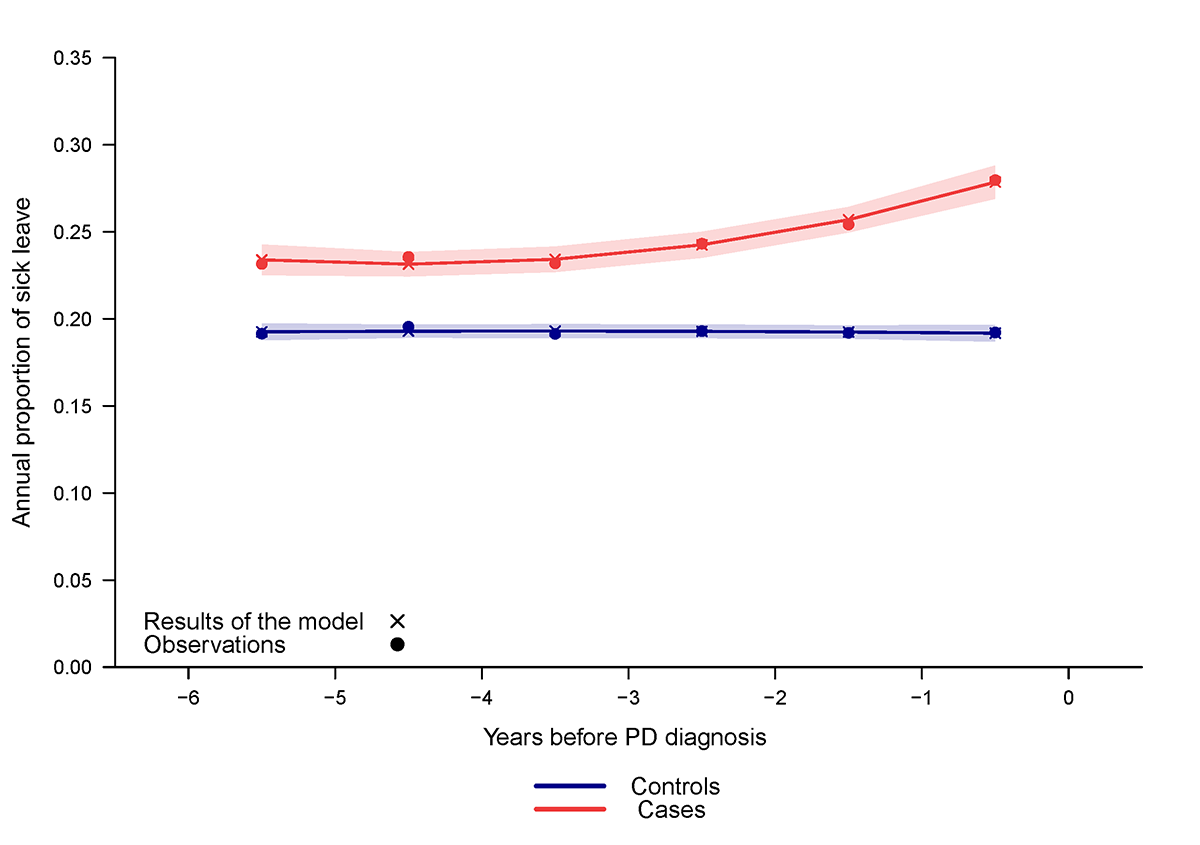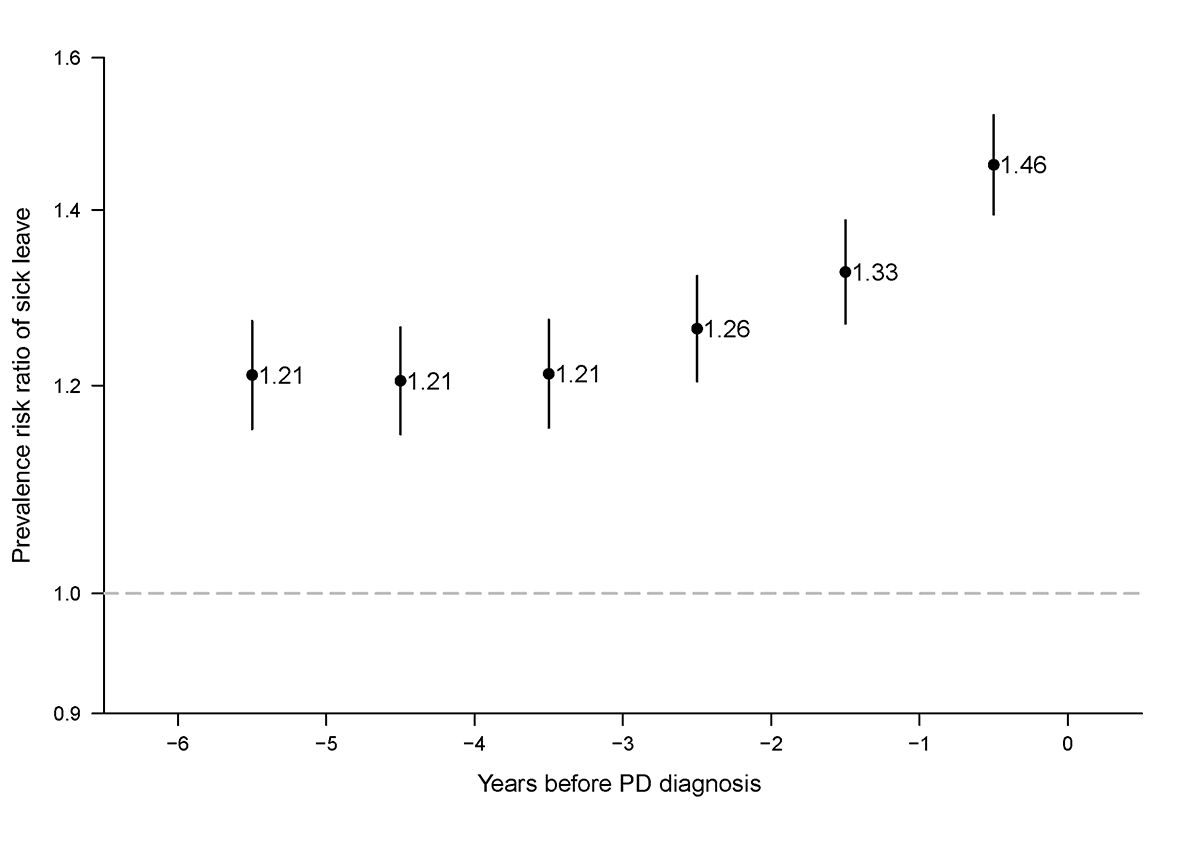Session Information
Date: Wednesday, September 25, 2019
Session Title: Epidemiology
Session Time: 1:15pm-2:45pm
Location: Les Muses, Level 3
Objective: To examine whether the frequency of sick leaves is higher in patients with Parkinson’s disease (PD) than in controls in the years preceding diagnosis.
Background: Non-motor symptoms (e.g., constipation, sleep disturbances, depression, anxiety) during the prodromal phase of Parkinson’s disease (PD) can affect the working lives of the patients several years before diagnosis. In France, over 25,000 people are newly treated for PD each year, of whom 17% are of working age (<65 years).
Method: As part of a nationwide population-based case-control study among people enrolled in the general health insurance plan (75% of the French population), incident PD cases ≤60y (2012-2015) were identified using a validated algorithm based on drug claims [1, 2]. Three controls were matched on age, sex, and residence area to each case. Over the 6y preceding the reference date (date of diagnosis in cases, same date in matched controls), we determined whether cases and controls had at least one compensated sick leave each year. We compared the trajectories of the annual proportion of cases and controls with sick leaves using generalized estimating equations poisson models with a backward time scale (linear and quadratic) and computed prevalence ratio (PR) and 95% confidence intervals (CI). We tested whether the difference in trajectories between cases and controls was modified by sex.
Results: The study population included 8,117 PD cases and 23,168 controls. Their median age was 53y and 54% were male. Over the 6y preceding the reference year, 28% of the cases (n=4,494) and 24% of the controls (n=3,623) had ≥1 sick leave (PR=1.20, 95% CI=1.15-1.24). Trajectories of the annual proportion of sick leaves before the reference date were different in cases and controls (p<0.001; [figure1]). While their frequency was stable over time in controls (p=0.69), it increased in cases as they approached diagnosis (p<0.001). In addition, 6y before the reference date, the annual proportion of sick leave was already higher in cases (23%) than controls (19%; PR=1.21, 95% CI=1.15-1.27; [figure2]). Results were similar in men and women (p for interaction=0.43).
Conclusion: PD patients of working age have more sick leaves than matched controls until 6 years before diagnosis. These findings demonstrate the impact of non-motor symptoms on the working life of persons who will later develop PD.
References: [1] Moisan F, Gourlet V, Mazurie JL, Dupupet JL, Houssinot J, Goldberg M, et al. Prediction model of Parkinson’s disease based on antiparkinsonian drug claims. AmJEpidemiol 2011;174(3):354-63. [2] Carcaillon-Bentata L, Moutengou E, Boussac-Zarebska M, Moisan F, Ha C, Elbaz A. Mortalité d’une cohorte de cas incidents de maladie de Parkinson identifiés dans les bases médico-administratives. Bull Epidemiol Hebd 2018;8-9:150-6.
To cite this abstract in AMA style:
F. Moisan, L. Mandereau-Bruno, E. Moutengou, L. Carcaillon-Bentata, A. Elbaz. Sick leaves in the years preceding the diagnosis of Parkinson’s disease: a nationwide case-control study in France [abstract]. Mov Disord. 2019; 34 (suppl 2). https://www.mdsabstracts.org/abstract/sick-leaves-in-the-years-preceding-the-diagnosis-of-parkinsons-disease-a-nationwide-case-control-study-in-france/. Accessed December 15, 2025.« Back to 2019 International Congress
MDS Abstracts - https://www.mdsabstracts.org/abstract/sick-leaves-in-the-years-preceding-the-diagnosis-of-parkinsons-disease-a-nationwide-case-control-study-in-france/


